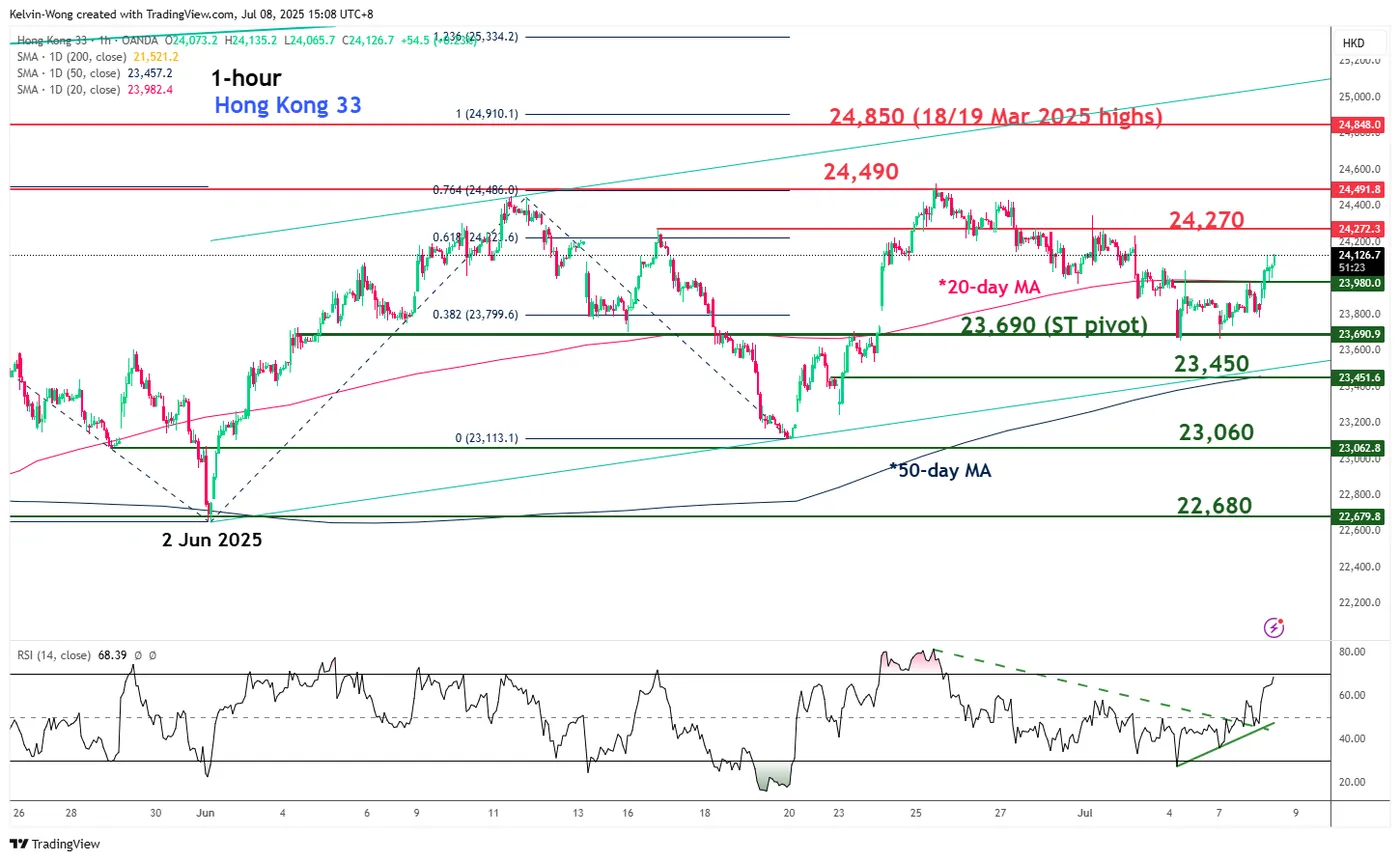Despite US President Trump issuing 14 new tariff letters on Monday, 7 July, Asian stock markets defied expectations. Unlike the sharp sell-off following the 1 April “Liberation Day” tariff announcement, regional indices rallied, many reaching three- to five-day highs in today’s Asian mid-session.
Most Asian Stock Markets Rally Despite Fresh US Tariff Warnings
The market reaction suggests growing skepticism about the White House following through decisively on tariff threats. While the letters outlined tariff rates ranging from 25% to 40% on exports from Japan, South Korea, South Africa, and several Southeast Asian nations (e.g., Malaysia, Thailand, Indonesia, Cambodia, Myanmar, and Laos), Trump extended the 9 July tariff deadline to 1 August and even hinted at a further extension to finalize trade negotiations.
European Stock Markets Outperformed US
Hong Kong’s rose 0.7%, and Singapore’s continued its record-breaking run, climbing 0.6% to an all-time intraday high of 4,057. South Korea’s surged 2%, while Japan’s edged up 0.4%.
Meanwhile, European stock markets outperformed the US. With Europe spared from the latest round of tariff letters and reports of a possible US-EU trade deal emerging this week, the German gained 1.2%, reaching a four-day high.
In contrast, the dropped 0.8%, trimming earlier losses of 1.25%. US equity futures showed mild recovery in Asia, with the and E-minis up 0.1% and 0.2%, respectively.
FX Markets Mixed as AUD Rebounds on RBA Surprise
Currency markets were mixed. The led gains, rising 0.7%, followed by the (+0.4%) and the (+0.2%), while the weakened 0.1%.
The AUD/USD posted a bullish reversal, reclaiming its 20-day moving average at 0.6520 as support. Although traders had anticipated a 25-bps rate cut by the RBA, the central bank held rates steady at 3.5%, citing trade-related uncertainty and choosing to monitor conditions before acting.
Economic Data Releases
Fig 1: Key data for today’s Asia mid-session (Source: MarketPulse)
Chart of the Day – Start of a Potential Impulsive Bullish Sequence For Hang Seng Index
Fig 2: Hong Kong 33 CFD Index minor trend as of 8 July 2025 (Source: TradingView)
The recent 4% minor corrective decline seen on the Hong Kong 33 CFD Index (a proxy of the Hang Seng Index futures) from the 25 June high to the 4 July low is likely to have ended.
The Hong Kong 33 CFD Index is now likely to be in the process of undergoing a potential fresh impulsive bullish sequence within its medium-term uptrend phase.
The hourly RSI momentum indicator has shaped a bullish divergence condition as its oversold region and staged a bullish momentum breakout on Monday, 7 July (see Fig 2).
Watch the 23,690 key short-term pivotal support for the next intermediate resistances to come in at 24,270, 24,490, and 24,850.
On the other hand, failure to hold at 23,690 negates the bullish tone for a slide towards the next support at 23,450 (also the 50-day moving average), and only a break below it sees a deeper corrective decline to expose the next intermediate support at 23,060 in the first step.
